It was LC Sarah's idea to go, she being as much of a cheese-lover as I, and we met up with her friend Pooja and grabbed a table for three.
The class wasn't as full as I'd expected, and certainly not as busy as when we've been there for cocktail classes with Jackson Cannon. Which was surprising, given that our instructor was as big (if not bigger) in the cheese world than Jackson is in the, uh, spirit world: Ihsan Gurdal, owner of Formaggio Kitchen.
As a bonus (like we needed an incentive), class participants got a copy of The Cheese Primer, a nice introduction to worldwide cheese regions.
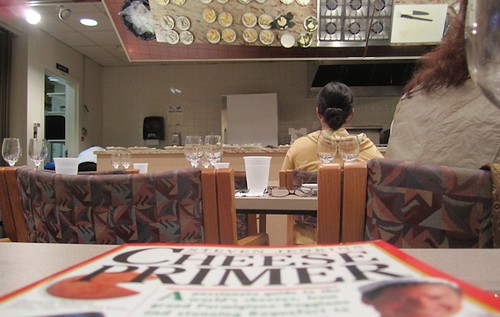
In the angled mirror above the counter, you can see the reflection of the evening's intensive study focus.
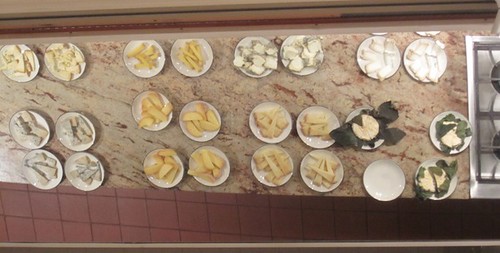
Ihsan got straight into the important stuff: cheese storage. Saran wrap was right out, because it messes with the cheese's natural moisture balance; wax paper was better. At the Formaggio in Cambridge, Ihsan has built a cheese cave to replicate perfect storage conditions. For the rest of us, the salad crisper in the fridge is the best option (who knew?).
He explained the importance of checking cut cheese for a shiny coating (the result of oils rising to the surface), and of scraping it off, because the oils quickly turn rancid and spoil the flavor. And he described the best way to slice a cheese: in wedges that include both the center and the outside, because the flavor is different at the core than at the rind.
Then he outlined the differences between cheese made with goat, sheep, and cow milk: how the first is the most sensitive to pasteurization; the second is fattier; the third is most common because it's available year-round. How the first milking of the morning produces creamier liquid, because the animals have been resting and digesting all night. How the grazing location (high altitude, for instance) or season (dictating availability of herbs and wildflowers) creates variations in the same cheese throughout the year.
And he talked about how he builds relationships with cheese producers, buying directly from the source, rather than going through importers and distributers. This allows him to find small-scale suppliers and unusual varieties, but also means he has to win over producers who are reluctant to sell outside of Europe.
Ihsan recounted visiting a producer in France who houses thousands of wheels of cheese in an old underground fortress and doing a taste-test under the affineur's watchful eye.
"I taste pineapple," he said, "and ... hazelnuts."
"Hazelnuts? French or Italian? Skin on or skin off? Roasted or unroasted?"
Luckily for us, he passed the test.
The class (consisting largely of women who were all, I think, quite taken with our raconteur), sat in rapt silence while he shared anecdotes of travel, and tasting, and discovery.
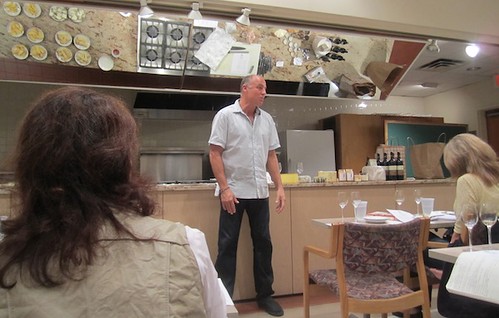
And then we started on our own taste adventure.
First, two goat's milk cheeses: Meg's Big Sunshine from Ruggles Hill Creamery (check out the photos of their awesome goats!) and Robiola di capra al fico from Piedmont, Italy.
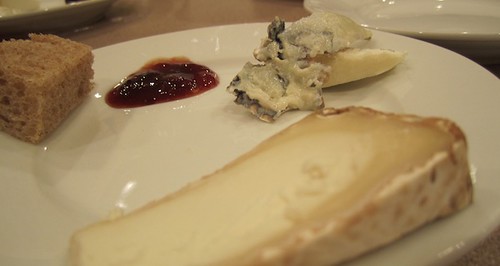
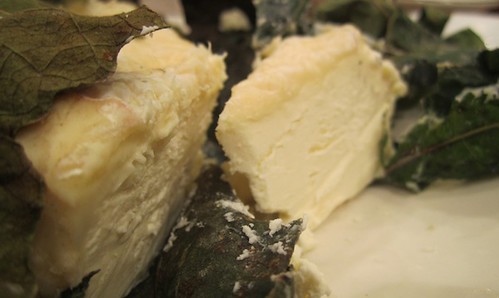
Both were creamy and butttery, with a slight citrus hint. I preferred the American over the Italian, but it was close.
The red stuff on the top plate is an insanely good strawberry-rose jam from Blue Chair.
Next up, sheeps. Ihsan served up two Corsican cheeses with both the best-smelling and worst-smelling rinds evar. The good was the Saveur du maquis (literally "taste of the brush"), the outside of which was coated with the same scrub vegetation that the sheep eat: juniper, rosemary, thyme, and other herbs. It smelled like Sunday lunch and tasted amazing.
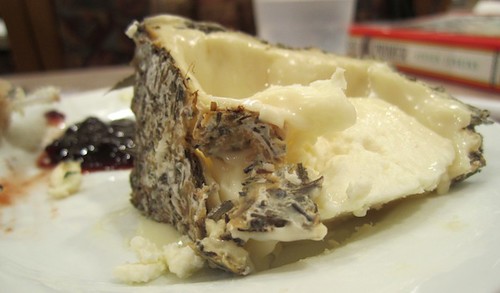
The ugly, at the other end of the spectrum, was L'Empereur. The cheese was nice enough — slightly crumbly, with a rich flavor — but the rind is rubbed with lamb fat, which gives it an aroma best described as litière de chat.
Breathe it in, won't you?
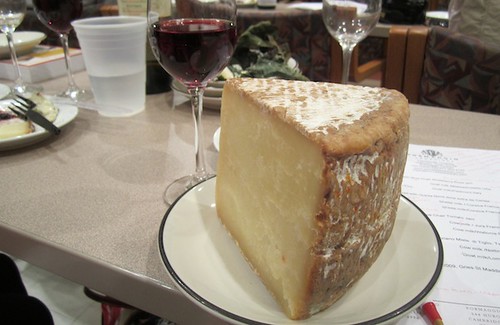
Then we moved on to cow's milk cheese: a creamy, fabulous comté from Marcel Petite (he of the underground cheese fortress)
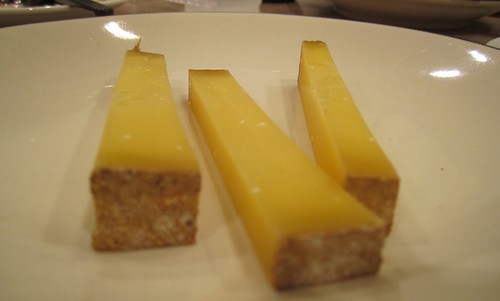
and Wavreumont from Belgium. It's made in a style once practiced at monasteries, and it has strong flavor; Sarah described it in her notes as "funky monk." 'Nuff said.
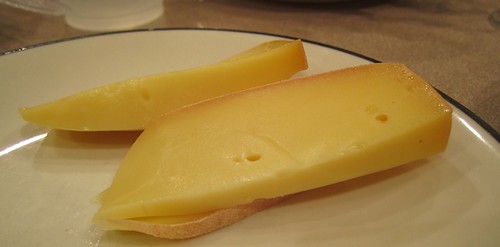
And then the last tasting: blue cheeses. First, Stichelton, an unpasteurized cow's-milk variety from Nottinghamshire, buttery, creamy, with notes of caramel.
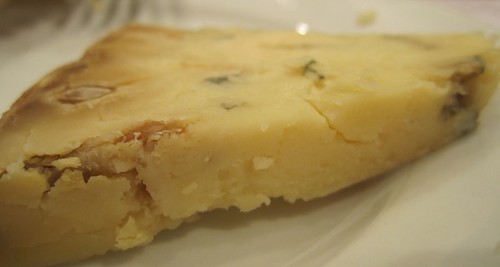
And then Blu di Capra stagionato at its ripest. Check out this beast. Meant either to kill or cure.
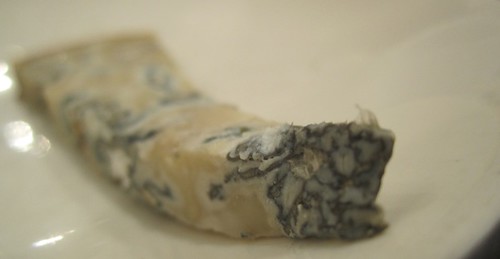
Okay, maybe that's an overstatement. Alls I know is that my still-baby tastebuds are not quite ready for the intensity of flavor in a blue like this. My notes read, "IT BURNS! IT BURNS!" so I wasn't able to identify anything more subtle.
Lest you think this put a damper on the evening, rest easy. I added another item to my list of Things I Can't Eat Yet, discovered some amazing new cheeses (and jams and honeys and wines), and found an excellent excuse to make a trip to Huron Village.
So, who's up for a cheese-tasting party?
Oh, I wish I'd known! Been dying to take one of hs classes but when I remember to check, the timing doesn't seem to work. Lovely pics.
ReplyDeleteReally liked your bio! Short and attractive to read.
ReplyDelete